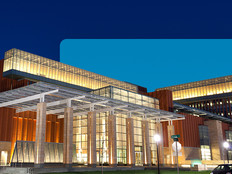Behind the Scenes at the National Cyberwatch Center
Teaching front-line technology skills requires high-functioning back-end technology — and lots of it.
Cybersecurity students at Prince George's Community College (PGCC) in Largo, Md., are trained within a robust classroom setup, virtualized online laboratories and high-fidelity simulation environments, all of which provide the tactical and hands-on experience they need to start a career in information assurance.
"We have to provide up-to-date content and learning opportunities that give our students the skills employers want so they can move into the workforce as quickly as possible," says Casey O'Brien, director of the National CyberWatch Center, located at PGCC.
Specialized classroom labs feature desktops equipped with virtualized hard drives and extra-high levels of memory and processing power to run multiple operating systems, as well as customized and open-source software programs. Desktops also can be updated with dual or extra-large monitors as needed for team-based projects.
Anything done in physical lab spaces also can be accomplished virtually thanks to the college's local area network, which is based on Cisco Systems routers and switches, and protected by a Juniper Networks firewall. The virtual learning environment is housed within PGCC's new $5 million data center, which serves all academic departments.
Some data center equipment is specific to the college's information assurance courses, including dedicated servers and Internet connections, which enable the department to relegate all cybersecurity learning activities to isolated "sandbox" environments, guarding against accidental security leaks. These resources are maintained and supported by both the college's IT staff and cybersecurity faculty members.
Students never go "live" in their formal cybersecurity instruction activities, and work instead in simulated exercises, defending a system that appears to be under constant attack, for instance, or testing for vulnerabilities and responding to security breaches.
"It's really important for students to let loose in risk-free environments, much like pilots in training get time in a flight simulator before they actually pilot a real plane,” says O'Brien.







